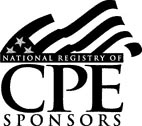ADMS/DERMS 101
February 12, 2024 | Online :: Central Time
“EUCI does a great job bringing the experience of the industry to the classroom in a very interactive way. The presenters tell the truth! You should be able to start your project and inject benchmarks into your own utility to deliver great results.” – SCADA/EMS Manager, Jamaica Public Service Co.
Utilities find themselves in demanding times, with the move toward clean energy and distributed energy resources, grid control, reliability and transparency having become more difficult using existing DMS/OMS tools. Advanced Distribution Management Systems (ADMS) are the best answer to achieve these goals with Distributed Energy Resources Management Systems (DERMS) allowing for the integration of Distributed Energy Resources. This course brings together a systems expert and a utility user to share their knowledge and experiences making the functions and components of ADMS/DERMS easier to grasp. Register today to gain applicable information on ADMS and DERMS that can benefit your everyday needs immediately.
Learning Outcomes
- Describe what an ADMS/DERMS is and its functions, terminology, and glossary of terms
- List the major functions and benefits of implementing ADMS/DERMS
- Review the interface to distributed energy resources (DER)
- Hear from a utility the dos and don’ts, surprises, and lessons learned on implanting their ADMS
- Review steps to take for the implementation planning of an ADMS
- Define what a successful ADMS procurement and implementation looks like
Monday, February 12, 2024 : Central Time
9:45 – 10:00 a.m.
Log In & Welcome
12:00 – 12:45 p.m.
Lunch Break
10:00 a.m. – 4:00 p.m.
Conference Timing
Session 1 – Introduction to ADMS/DERMS
- What is an ADMS/DERMS?
- Driving forces for ADMS/DERMS
- Need for improved situational awareness
- New regulatory commitments (FERC Order 2222, Texas PUC ADER, etc.)
- Key terms and definitions for ADMS and DERMS
- Building blocks of ADMS/DERMS (conceptual architecture)
- SCADA
- Distribution advanced applications (OLPF, FLISR, VVO, etc.)
- Outage management functions
- DER management functions
- External interfaces (GIS, AMI, Market operator, etc.)
Session 2 – Major ADMS/DERMS Functions
- Overview of the major ADMS/DERMS functions
- Distribution system operating model
- Intelligent alarm processing
- Load estimation and allocation (load profiles)
- Online power flow
- Switch order management
- Fault location analysis
- Fault Location Isolation and Service Restoration (FLISR)
- Volt-VAR Optimization (VVO)/CVR
- Outage management functions
- DER Management Functions
- Commercial (registration, modelling, aggregation, market support, incentive payments, etc.)
- Technical (Monitoring/Control, forecasting, DER use cases, etc.)
Session 3 – ADMS Implementation Planning
- Major barriers to success (e.g., readiness of data and field equipment, DER awareness and integration)
- Needs analysis
- Grid auditing to prepare for ADMS/DERMS selection
- Data development and analysis process
- Technology assessment
- Implementation strategy (phased implementation, procurement strategy, schedule)
- Resource plan
- Business case
Session 4 – Project Implementation
- Procurement activities
- Design review
- Testing
- Training
- Installation
- Change management strategy
- Go-live activities
- Post implementation activities
Session 5 – Oklahoma Gas & Electric ADMS Implementation Case Study
- Project description
- Internal discussions
- Grid analysis for needs assessments
- Technology determination and procurement process
- Implementation and lessons learned
- Procedures and processes to go with FLISR
 Grant Cochenour, Lead Distribution Management System Engineer, Oklahoma Gas and Electric
Grant Cochenour, Lead Distribution Management System Engineer, Oklahoma Gas and Electric
Grant is a PE registered in Oklahoma. He has worked for OG&E for over 15 years in distribution design and operation, system protection and control, and SCADA-DMS. He has been the lead technical SME for both of OG&E’s DMS implementations.
He has B.S. and M.S. degrees in Electrical Engineering from Kansas State University. He teaches graduate electrical engineering courses part time on electrical power systems at Oklahoma Christian University.
 Bob Uluski, Executive Consultant, ESTA International. With over 40 years of experience in electric utility Transmission and Distribution (T&D) automation systems, his experience includes planning and implementing energy storage, microgrid control systems, advanced distribution management systems (DMS), feeder automation systems, substation automation, protective relay systems, and distributed resource energy management systems (DERMS).
Bob Uluski, Executive Consultant, ESTA International. With over 40 years of experience in electric utility Transmission and Distribution (T&D) automation systems, his experience includes planning and implementing energy storage, microgrid control systems, advanced distribution management systems (DMS), feeder automation systems, substation automation, protective relay systems, and distributed resource energy management systems (DERMS).
Bob has helped numerous North American and International electric utilities to plan, design, and implement computer and communication systems for automating distribution feeders and T&D substations, along with DMS and enterprise level systems that make optimal use of these automation facilities. Bob is also a recognized expert in developing the business case for implementing these systems.
Bob has considerable experience in conducting tutorials on Distribution Automation technologies and advanced applications for DMS, having presented many training courses on the subject at DistribuTECH, NRECA TechAdvantage, IEEE, EUCI, and others. Bob has also presented a course on DA fundamentals and Conservation Voltage Reduction (CVR) principles for the Ohio Public Utility Commission members.
In 2010, the IEEE Power and Energy Society awarded Bob the Douglas M. Staszesky Distribution Automation award in recognition of significant contribution to the deployment of Distribution Automation in the electric utility industry.
We will be using Microsoft Teams to facilitate your participation in the upcoming event. You do not need to have an existing Teams account in order to participate in the broadcast – the course will play in your browser and you will have the option of using a microphone to speak with the room and ask questions, or type any questions in via the chat window and our on-site representative will relay your question to the instructor.
- Microsoft recommends downloading and installing the Teams app if possible. You may also use the Edge browser or Chrome.
- You will receive a separate email with a unique link to a personalized landing page which will include links to join all sessions of this event.
- If you are using a microphone, please ensure that it is muted until such time as you need to ask a question.
- The remote meeting connection will be open approximately 30 minutes before the start of the course. We encourage you to connect as early as possible in case you experience any unforeseen problems.
Please Note: This event is being conducted entirely online. All attendees will connect and attend from their computer, one connection per purchase. For details please see our FAQ
If you are unable to attend at the scheduled date and time, we make recordings available to all attendees for 7 days after the event
REGISTER NOW FOR THIS EVENT:
ADMS/DERMS 101
February 12, 2024 | Online
| Individual attendee(s) - $ 895.00 each | |
Volume pricing also availableIndividual attendee tickets can be mixed with ticket packs for complete flexibility |
|
| Pack of 5 attendees - $ 3,580.00 (20% discount) | |
| Pack of 10 attendees - $ 6,265.00 (30% discount) | |
| Pack of 20 attendees - $ 10,740.00 (40% discount) | |
Your registration may be transferred to a member of your organization up to 24 hours in advance of the event. Cancellations must be received on or before January 12, 2024 in order to be refunded and will be subject to a US $195.00 processing fee per registrant. No refunds will be made after this date. Cancellations received after this date will create a credit of the tuition (less processing fee) good toward any other EUCI event. This credit will be good for six months from the cancellation date. In the event of non-attendance, all registration fees will be forfeited. In case of conference cancellation, EUCIs liability is limited to refund of the event registration fee only. For more information regarding administrative policies, such as complaints and refunds, please contact our offices at 303-770-8800
Credits

EUCI is accredited by the International Accreditors for Continuing Education and Training (IACET) and offers IACET CEUs for its learning events that comply with the ANSI/IACET Continuing Education and Training Standard. IACET is recognized internationally as a standard development organization and accrediting body that promotes quality of continuing education and training.
EUCI is authorized by IACET to offer 0.5 CEUs for this event
Requirements for Successful Completion of Program
Participants must log in each day and be in attendance for the entirety of the conference to be eligible for continuing education credit.
Instructional Methods
Case studies, PowerPoint presentations, and group discussion will be used in this event.
Upon successful completion of this event, program participants interested in receiving CPE credits will receive a certificate of completion.
Course CPE Credits: 6.0
There is no prerequisite for this Course.
Program field of study: Specialized Knowledge
Program Level: Basic
Delivery Method: Group Internet Based
Advanced Preparation: None
 EUCI is registered with the National Association of State Boards of Accountancy (NASBA) as a sponsor of continuing professional education on the National Registry of CPE Sponsors. State boards of accountancy have final authority on the acceptance of individual courses for CPE credit. Complaints regarding registered sponsors may be submitted to the National Registry of CPE Sponsors through its web site: www.nasbaregistry.org
EUCI is registered with the National Association of State Boards of Accountancy (NASBA) as a sponsor of continuing professional education on the National Registry of CPE Sponsors. State boards of accountancy have final authority on the acceptance of individual courses for CPE credit. Complaints regarding registered sponsors may be submitted to the National Registry of CPE Sponsors through its web site: www.nasbaregistry.org
Who Should Attend
This conference was developed for those working or specializing in the following areas:
- Managers, Directors and Supervisors of Distribution Operations and Management
- IT Managers, Directors and Supervisors
- Utility personnel tasked with implementing/upgrading their OMS, DMS, ADMS and DERMS solutions
- Regulators who wish to better understand the decision-making utilities undergo
- Vendors who wish to learn from utilities implementing new systems
